Tyre elevator
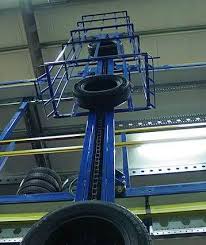
Application description
A tyre elevator is an automated system usually needed in tyre centres. Here, in order to save space, the tyres are stocked in bins placed on different levels/heights. To reach the highest ones it is usually necessary using a machine.
According to the Australian laws, especially the OHS - Occupational Health and Safety Regulations, tyres are not to be manually lifted from the floor to the mezzanine storage areas mainly if these areas are not easily reachable.
This specific law does not have either maximum weight or maximum force limits. However, the employer has to identify the tasks which involve hazardous manual handling and take actions to reduce the risk. In this particular case, manually lifting tyres for several times a day is a risk for the employee’s health. This situation brought to the introduction of an automated system which helps the employees in the big tyre centres.
To respond and solve the OHS regulations it has been created a machine with a chain hold by a sprocket, which runs in a steel structure. On this chain there are some fixed brackets which can easily lift the tyres. Moving the chain, the bracket lifts the tyre and releases it once it reaches the top of the structure. This system is widely used in major tyre centres, where the tyres are moved throughout the day. Moreover, this kind of system allows to the employee to work faster.
Application specifications
Normally, the tyre stock is organized in a specific way, in order to save space. So tyres can be stocked in bins which can be several meters above the ground. For this particular applications, the elevator has to reach bins placed 3 to 5 meters above the ground. To guarantee an efficient work, this task has to be completed in a short time, about 15 – 20 seconds. The diameter of the sprocket which holds the chain is 160 mm.
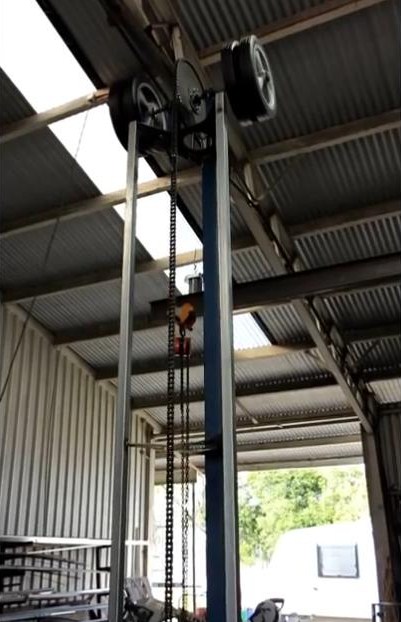
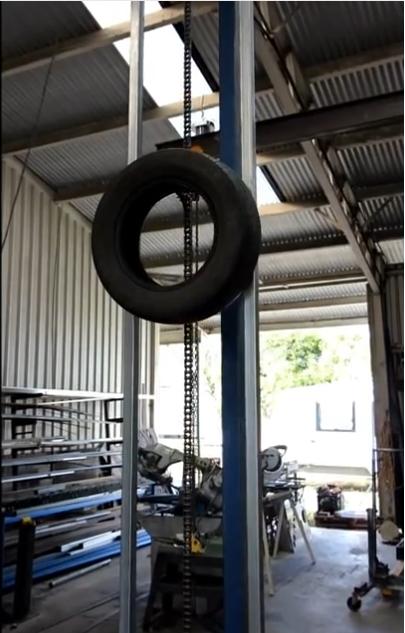
The total weight to be lifted is the sum of the weights of the tyres which are on the elevator at the same time. Tyres for different cars have different weights, and in this case the unit has to be able to lift all suburban cars’ tyres and four wheel drive cars’ tyres, so we consider them to be 18 kgs each. The bracket on the chain is fixed in order to have maximum four tyres on the elevator at the same time. This means that the system should have to lift maximum 72 kgs of weight.
Depending on the quantity of tyres needing to be placed in stock, the working time of this system may vary. In this particular case, this unit was installed in an important tyre centre. Due to this, the elevator works every day, twice a day for about 2 hours each time. This means that it works for four hours per day.
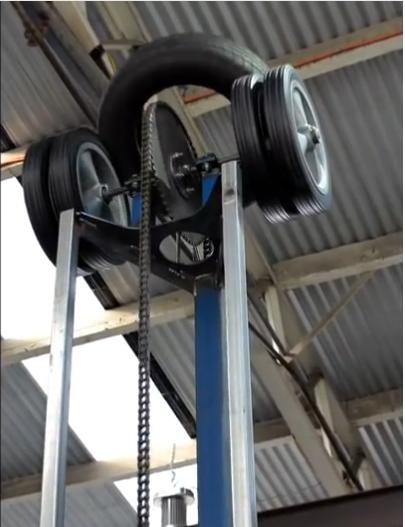
Product selection and sizing
In order to select the correct geared motor that can best fit this application, we have to consider the product specifications described above. As mentioned, the tyre on the bracket has to be lifted for maximum 5 meters in 15 – 20 seconds. To do so, the chain has to be driven by the sprocket which has a diameter of 160 mm. Knowing this, we can find out the speed of the sprocket, which is connected directly on the output shaft of the gearbox, that is about 25 rpm. Therefore, the ratio of the gearbox is i = 56, considering the gearbox driven by a 4 poles asynchronous electric motor with a speed of 1,400 rpm.
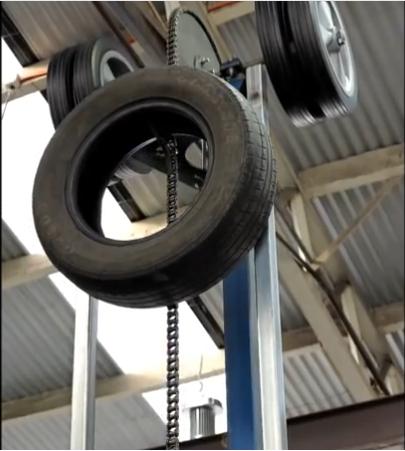
The required torque on the output shaft of the gearbox is proportional to the maximum weight that the system has to lift, so it is about M2 = 60 Nm. With these values we find out that the required power is about 0.25 kW. To find the gearbox service factor, it is necessary to keep in mind that the elevator works for 4 hours per day and can be started maximum 110 times per hour in case it’s necessary to stop it after each tyre is hooked.
Motovario Solution
The choice of the geared motor suitable for this application is as follows. It is fundamental that in case of any power failure the elevator stops and does not drive backwards, allowing the tyres to fall from the structure. Because of the power range we are in, the best solution for this application is a worm gearbox which should have to be statically irreversible (for evident safety reasons).
From the working characteristics required, and with the aid of the graph in the worm gearboxes catalogue, we can easily find that the service factor for this system is 1.4. Finally, the gearbox selected for this application is a NMRVP63 - i=60 connected to a 4 pole electric motor size 71 which can provide up to 0.37 kW of power. This selection can guarantee:
• an output speed of 23 rpm
• an output torque of 95 Nm with a service factor of 1.4
Due to the compact design of the NMRV Power series, this solution allows a smaller floor space and carriage for the chain drive and guards.
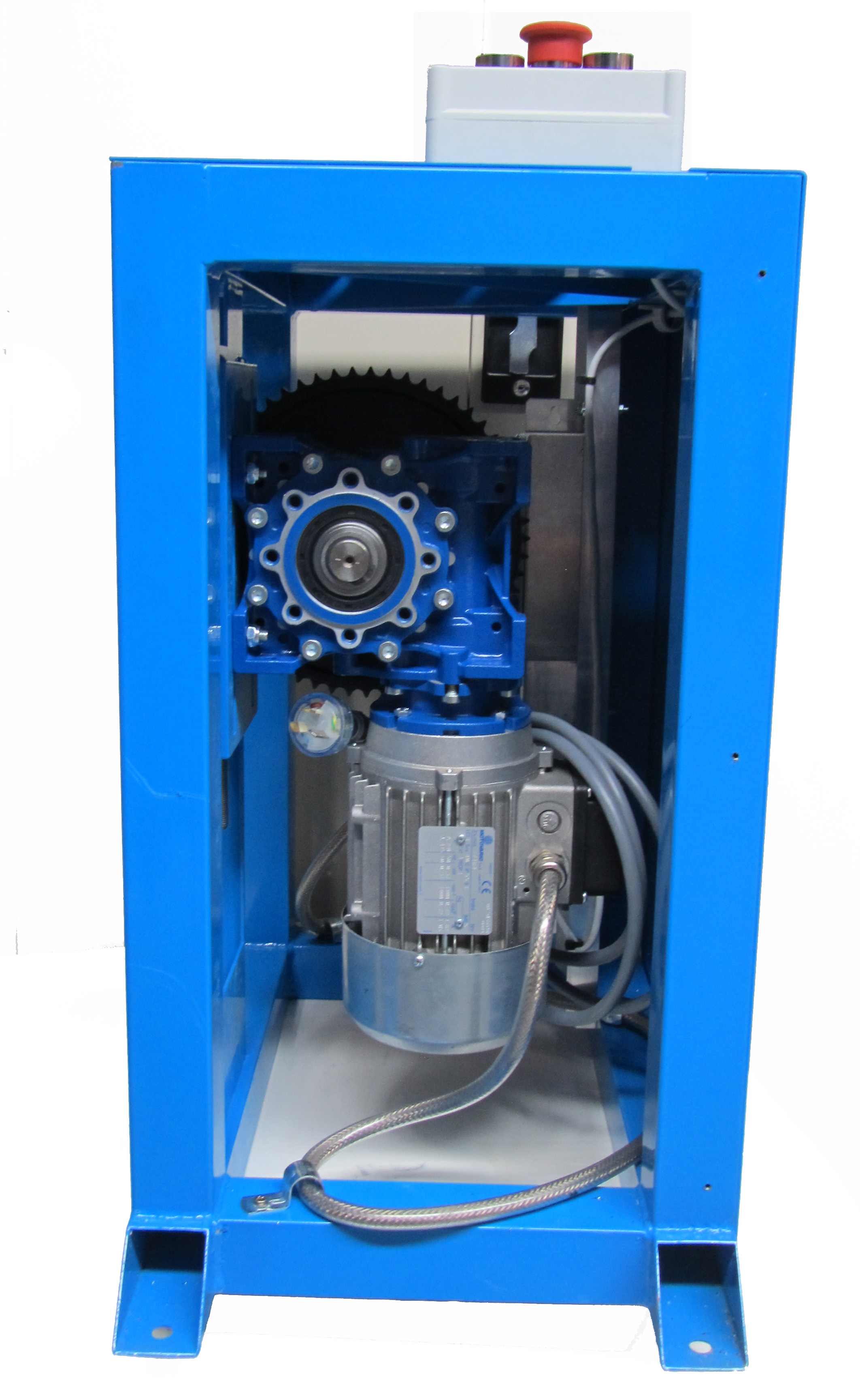
The geared motor has been installed in conjunction with a variable speed drive (not supplied by Motovario) with a single phase power supply. This solution was used to control the forward/ reverse direction of the system and as overload protection for the operator.
